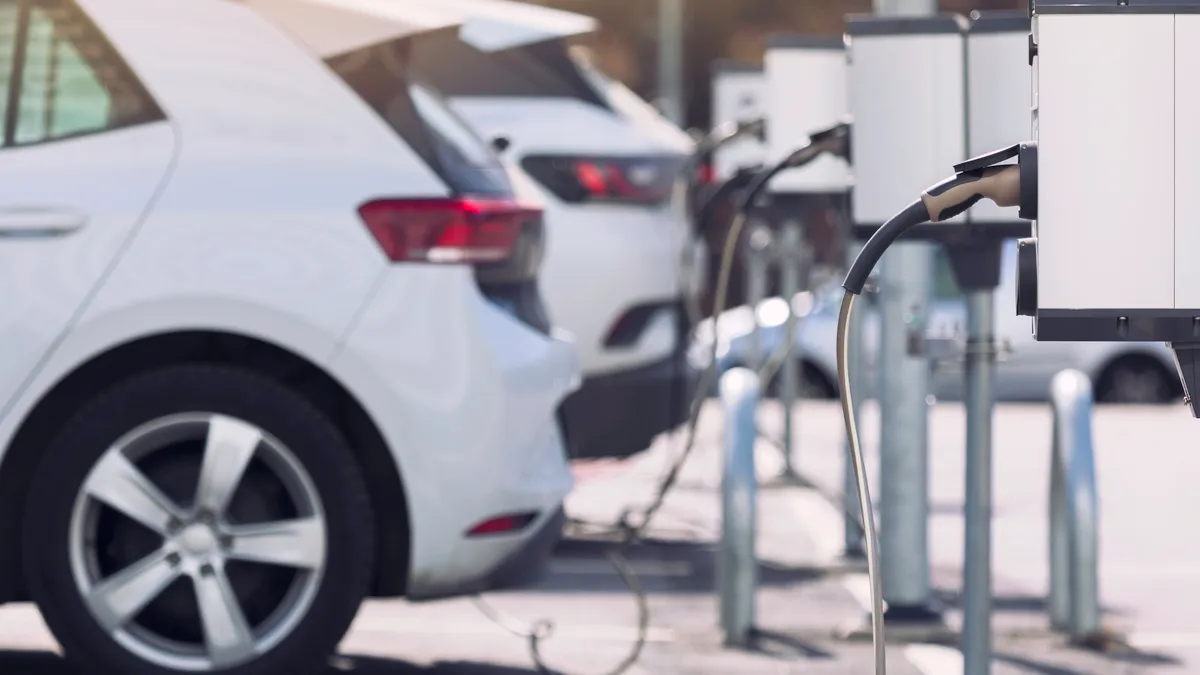Dive Brief:
-
B2U Storage Solutions announced Tuesday it has reached 25 MWh of storage capacity at its hybrid solar-storage site in Lancaster, California. The facility comprises 1,300 EV batteries once used in Honda and Nissan vehicles.
- B2U’s Sierra facility is interconnected to the grid, selling power and grid services into California’s wholesale power market.
- Sierra began commercial operations in 2020, with the company scaling capacity in phases, B2U said. The deployment represents the largest operational energy storage system using second-life EV batteries showcasing B2U’s EV Pack Storage, called EPS, technology, it said.
Dive Insight:
B2U said it works with auto manufacturers, EV fleet operators, dismantling companies and others to source batteries when automotive use is done. Re-use complements recycling by maximizing the residual value of batteries, it said.
Honda and Nissan are investing in emerging tech solutions and partnering with startups and other businesses to reduce electric vehicle battery waste, according to CB Insights. As automakers seek to keep up with rising consumer demand for EVs, a “glut of used EV batteries” with critical raw materials is mounting, holding an average of 80% of their charge capacity, CB Insights said.
B2U Storage Solutions said it uses its EPS technology to deploy EV batteries in large-scale stationary storage. In addition to deploying Honda and Nissan EV batteries at scale, B2U said it has successfully tested GM Bolt and Tesla Model 3 battery packs, demonstrating that its EPS system can be configured to operate any EV battery.
“B2U’s EPS technology has been developed to address the challenges of second life in large-scale energy storage,” said Freeman Hall, co-founder and CEO of B2U Storage Solutions.
The EPS system’s cabinet controllers connect and disconnect batteries wired in series and parallel strings during charge and discharge cycles, with lower-capacity weaker batteries not limiting the output of stronger batteries, B2U said.
“This approach enables our system to achieve efficient energy yield despite the variance in capacity inherent in second life batteries,” Hall said.
Recycling EV batteries helps reduce reliance on raw materials that can be hard to mine and are often found in countries with poor human rights records. The Union of Concerned Scientists says reusing batteries in secondary applications is a “promising strategy.”
The economic potential for battery reuse, or a second life, could help cut the costs of EV batteries and increase the value of a used EV, it said. As the EV market grows, second-life batteries also could be used for low-cost storage for utilities and electricity consumers, UCS said.
A 2019 McKinsey Sustainability report said even after 10 years, an EV battery can be reused in markets that need stationary energy storage requiring less frequent cycling, particularly 100 to 300 cycles per year. Alternatives are mass disposal or recycling, “which can make sense to battery makers who want to secure high-value metals, such as cobalt and nickel, and who can achieve recycling costs competitive with mining,” the report said.
Legislation signed last year by President Joe Biden calls for federal agencies such as the General Services Administration and Office of Management and Budget to work with the Environmental Protection Agency, manufacturers and recycle operations to draft a strategic plan for reusing and recycling EV batteries. It also encourages collaboration with scientists, labs, startups and projects.














